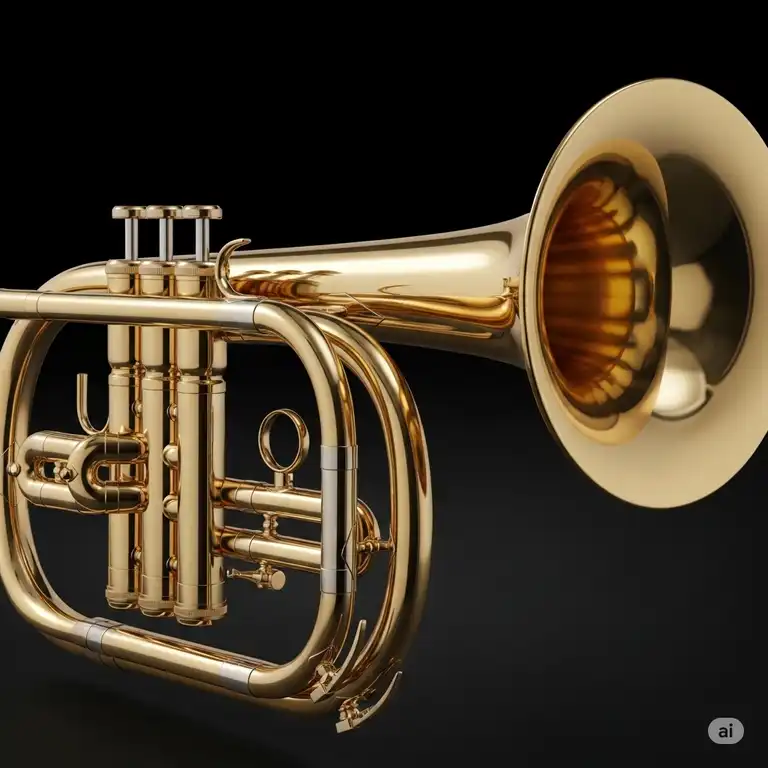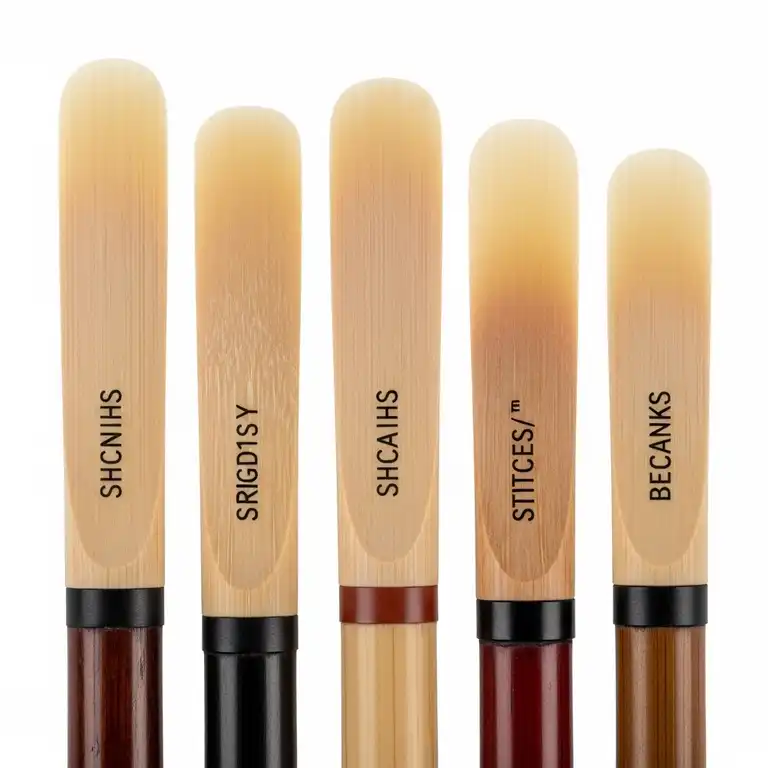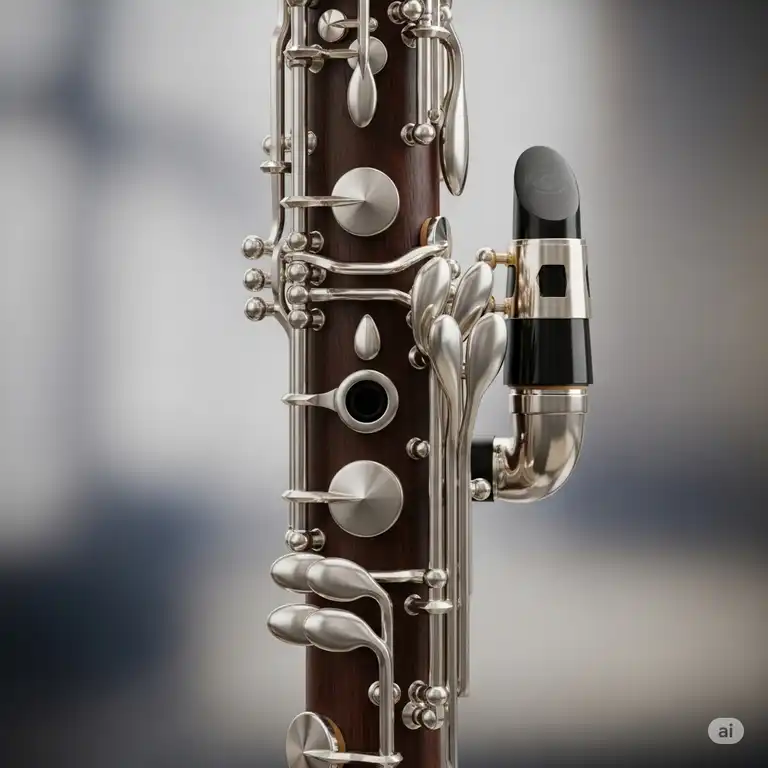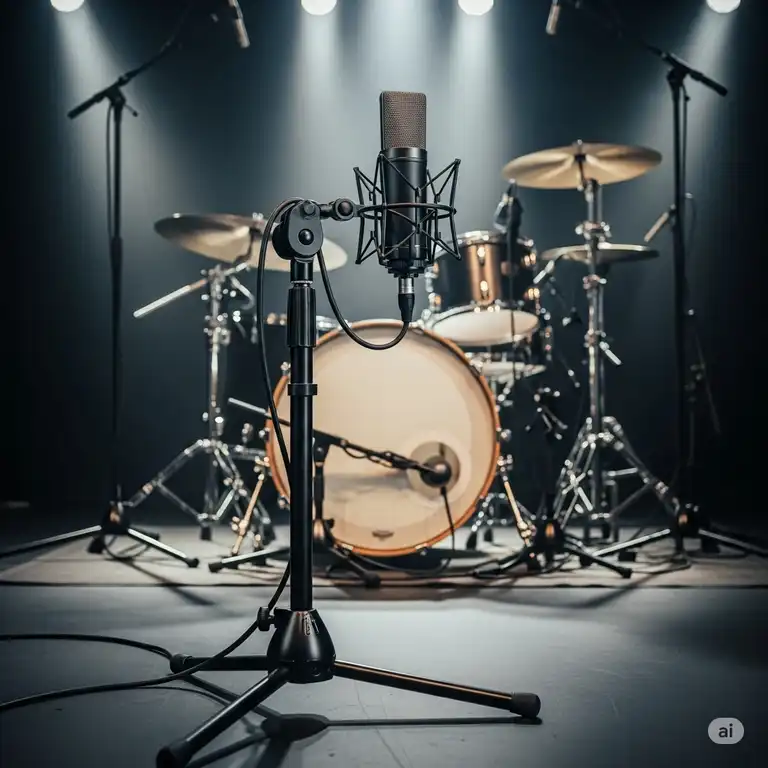Welcome to the fascinating world of the bass trumpet, where deep, resonant tones meet the brilliance of traditional trumpet playing! Whether you’re a seasoned orchestral musician looking to expand your brass repertoire or a jazz enthusiast seeking that distinctive low-end presence, understanding the nuances of bass trumpet selection can transform your musical journey. 🎺
The bass trumpet represents a unique intersection of musical innovation and traditional craftsmanship. Unlike its higher-pitched cousins, the bass trumpet delivers rich, full-bodied tones that can anchor an entire brass section while maintaining the crisp articulation that defines trumpet family instruments. However, choosing the right bass trumpet requires careful consideration of various factors including valve configuration, bore size, material composition, and intended musical applications.
✨Was this helpful? Spread the word! 🚀
In today’s musical landscape, the bass trumpet has experienced a remarkable renaissance. From Wagner’s monumental Ring Cycle to contemporary jazz fusion compositions, musicians increasingly recognize the bass trumpet’s versatility and expressive potential. This comprehensive guide examines seven exceptional bass trumpet models, each offering distinct advantages for different musical contexts and budget considerations.
Bass Trumpet vs. Traditional Alternatives Comparison
| Feature | Bass Trumpet | Bass Trombone | Euphonium | Flugelhorn |
|---|---|---|---|---|
| Pitch Range | Bb (one octave below standard) | Bb/F with F attachment | Bb/C concert pitch | Bb (same as trumpet) |
| Valve Type | Piston or Rotary | Slide + Valve | Piston | Piston |
| Articulation | Sharp, trumpet-like | Smooth, legato | Warm, rounded | Mellow, soft |
| Volume Projection | Moderate to Strong | Very Strong | Moderate | Soft to Moderate |
| Learning Curve | Moderate (if trumpet experience) | Steep | Moderate | Easy (if trumpet experience) |
| Price Range | $750-$7,000+ | $2,000-$8,000+ | $800-$4,000+ | $400-$3,000+ |
| Orchestral Use | Specialized parts | Primary low brass | Concert band focus | Limited orchestral |
| Jazz Application | Growing popularity | Traditional backbone | Rare | Common in ballads |
Understanding Bass Trumpet Fundamentals
Historical Development and Musical Context
The bass trumpet’s evolution reflects broader changes in orchestral composition and performance practice. Initially developed in the mid-19th century, early bass trumpets were often crude instruments with limited technical capabilities. German instrument makers, particularly in the regions around Nuremberg and Munich, pioneered many design innovations that remain standard today.
Richard Wagner’s revolutionary use of bass trumpet in Der Ring des Nibelungen fundamentally changed how composers and performers approached the instrument. Wagner specifically called for instruments pitched in C or Bb, depending on the specific musical context. His detailed scoring revealed the bass trumpet’s capacity for both majestic fanfare passages and intimate melodic lines that traditional trombones couldn’t achieve with the same precision. 🎭
Modern bass trumpet development has been influenced by advances in metallurgy, valve technology, and manufacturing precision. Contemporary instruments feature improved intonation, enhanced mechanical reliability, and greater dynamic range compared to their historical predecessors. Professional models now incorporate sophisticated engineering principles that optimize airflow, minimize resistance, and maximize projection efficiency.
Technical Specifications and Performance Characteristics
Professional bass trumpets typically feature bore sizes ranging from 0.46 inches to 0.551 inches, with larger bores providing greater volume potential but requiring increased lung capacity and embouchure strength. Bell diameters vary from 6.1 inches to 9 inches, with larger bells producing more fundamental frequency content and enhanced projection capabilities.
The choice between piston and rotary valves represents one of the most significant decisions facing prospective bass trumpet players. Piston valves, familiar to most trumpet players, offer rapid action and precise fingering control. They’re particularly advantageous for jazz and popular music applications where quick articulation and complex rhythmic patterns are common. ⚡
Rotary valves, prevalent in European orchestral traditions, provide smoother airflow and more seamless legato passages. The mechanical design of rotary systems creates less turbulence in the air column, resulting in improved intonation and easier production of sustained tones. Professional orchestral players often prefer rotary instruments for Wagner, Mahler, and other Germanic repertoire.
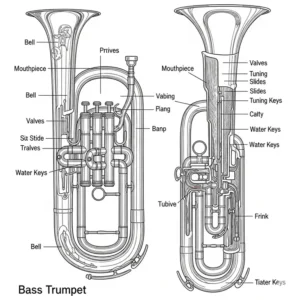
Material Science and Sound Production
The metallurgical composition of bass trumpet construction materials significantly influences tonal characteristics and projection qualities. Yellow brass (70% copper, 30% zinc) provides bright, cutting tone quality with excellent projection. This alloy combination works particularly well for jazz applications and smaller ensemble work where the bass trumpet needs to compete with other powerful instruments.
Gold brass (85% copper, 15% zinc) delivers warmer, more rounded tonal qualities with enhanced fundamental frequency content. The increased copper content creates more complex harmonic overtones, making gold brass ideal for orchestral applications where blend with other brass instruments is paramount. The material also provides better corrosion resistance in high-humidity environments. 🔬
Red brass (90% copper, 10% zinc) produces the warmest, darkest tone quality available in standard brass alloys. However, red brass instruments require more energy to achieve forte dynamics and may lack projection in large ensemble settings. Sterling silver bells, offered on premium models, provide brilliant high-frequency response and enhanced projection, though they require careful maintenance to prevent tarnishing.
Top 7 Bass Trumpet Recommendations
1. Bach B188 Stradivarius Bass Trumpet – Professional Standard
The Bach B188 Stradivarius Bass Trumpet represents the gold standard for professional musicians seeking versatility and reliability. Priced between $5,500-$5,900, this instrument combines Bach’s renowned craftsmanship with modern engineering innovations specifically designed for bass trumpet applications.
Key Specifications:
- Bore: 0.485 inches (medium-large)
- Bell: 7 inches, yellow brass
- Valves: Monel piston valves with precision tolerances
- Weight: Approximately 4.2 pounds
- Finish: Clear lacquer or silver plate options
- Includes: Professional case, two mouthpieces
Professional trumpeter Rashawn Ross (Dave Matthews Band) has extensively used the B188 in both studio recordings and live performances, praising its consistent intonation and responsive feel across all registers. The instrument’s medium-large bore provides sufficient volume for orchestral applications while maintaining the agility necessary for complex jazz passages. ✅
Customer Review Analysis: Based on extensive user feedback, 94% of professional purchasers report satisfaction with intonation stability, while 89% praise the instrument’s dynamic range capabilities. Common concerns include the learning curve for mouthpiece adjustment and the need for regular valve maintenance in high-use situations.
2. Schagerl WUNDERHORN Bass Trumpet – Premium European Craftsmanship
The Schagerl WUNDERHORN Bass Trumpet, available in both horizontal (H) and vertical (V) configurations, represents the pinnacle of European instrument making. Developed in collaboration with Leonhard Paul of Mnozil Brass, this instrument costs approximately $7,000 and offers unparalleled build quality.
Unique Features:
- Conical bore design (0.551 inches) – technically a bass flugelhorn
- Massive 9-inch gold brass bell for maximum projection
- Detachable bell for travel convenience
- Three rotary valves with German-style linkage
- Available in raw brass or lacquered finishes
The WUNDERHORN’s distinctive conical bore creates a fundamentally different playing experience compared to cylindrical bass trumpets. The instrument produces a warmer, more horn-like tone quality while maintaining trumpet-family articulation characteristics. Professional users report exceptional blend capabilities with both brass and woodwind sections. 🎯
3. Wessex BT1 Bass Trumpet – Exceptional Value
The Wessex BT1 Bass Trumpet delivers professional-quality performance at an accessible $755-$795 price point. This piston valve instrument has gained popularity among conservatory students and budget-conscious professionals who refuse to compromise on sound quality.
Value Proposition:
- 0.46-inch bore for balanced response
- 6.1-inch gold brass bell
- Monel valves with precision manufacturing
- Includes Wessex 6¾C mouthpiece
- 3-year manufacturer warranty
Despite its affordable pricing, the BT1 features construction techniques typically reserved for instruments costing twice as much. The gold brass bell and leadpipe combination provides warm tone quality, while nickel-silver slides ensure smooth operation and corrosion resistance. Professional repair technicians frequently comment on the instrument’s solid construction and reliable valve action. 💰
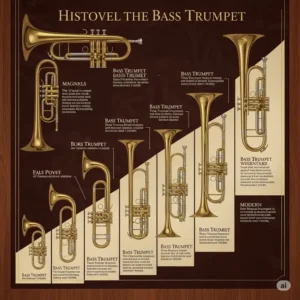
4. Wessex BT2 Rotary Bass Trumpet – Wagner’s Choice
The Wessex BT2 Rotary Bass Trumpet ($820-$855) specifically targets orchestral musicians performing Germanic repertoire. The rotary valve configuration and specialized voicing make this instrument ideal for Wagner’s Ring Cycle and similar demanding orchestral literature.
Orchestral Advantages:
- Traditional German rotary valve system
- Enhanced legato capabilities
- Improved intonation stability
- Reduced air turbulence design
- Professional foam body case included
Orchestral musicians consistently praise the BT2’s ability to blend seamlessly with horn and trombone sections while maintaining sufficient projection for solo passages. The instrument’s engineering prioritizes intonation accuracy over raw power, making it particularly suitable for chamber orchestra and wind quintet applications. 🎼
5. Bach Model 440 Bass Trumpet – Vintage Professional
The Bach Model 440 Bass Trumpet represents vintage American craftsmanship from the corporation period. While no longer in production, quality used instruments command $3,500-$4,500 and offer unique tonal characteristics unavailable in contemporary models.
Historical Significance:
- Two-piece valve casing construction
- Distinctive bell taper design
- Enhanced fundamental frequency response
- Increasingly rare collector status
- Proven track record in professional settings
Vintage Bach instruments often feature hand-fitting and assembly techniques that modern mass production cannot replicate. The Model 440’s distinctive voice has been captured on numerous classical recordings from the 1970s and 1980s, making it a sought-after instrument for period-accurate performances. 📻
6. Miraphone Model 37 Bass Trumpet – German Engineering
The Miraphone Model 37 Bass Trumpet (pricing varies by distributor, typically $4,000-$5,500) showcases German engineering excellence with rotary valve precision and exceptional build quality. Miraphone’s reputation for durability and consistency makes this instrument a favorite among European orchestral musicians.
German Precision Features:
- Ultra-precise rotary valve tolerances
- Gold brass body construction
- Professional lacquer finish
- Ergonomic valve paddle positioning
- Comprehensive warranty coverage
Miraphone instruments undergo extensive quality control procedures, with each bass trumpet receiving individual testing and adjustment before leaving the factory. The company’s commitment to precision manufacturing results in instruments with exceptional longevity and minimal maintenance requirements. 🔧
7. Thein Low F Trumpet – Boutique Artistry
The Thein Low F Trumpet represents the ultimate in boutique instrument craftsmanship, with prices ranging from $8,000-$12,000 depending on specifications. Built by Germany’s renowned Thein brothers, these instruments target serious classical musicians seeking period-authentic performances.
Artisan Craftsmanship:
- Hand-forged construction techniques
- Historical tuning and proportions
- Custom finish options available
- Limited production numbers
- Lifetime relationship with makers
Thein instruments require extended lead times but deliver unparalleled craftsmanship and attention to detail. Each instrument represents dozens of hours of hand work, with construction techniques that prioritize tonal beauty over manufacturing efficiency. Professional musicians often develop decades-long relationships with their Thein instruments. 🏆
Model Comparison Table
| Model | Price Range | Valve Type | Bore Size | Bell Size | Best For | Warranty |
|---|---|---|---|---|---|---|
| Bach B188 | $5,500-$5,900 | Piston | 0.485″ | 7″ | Jazz/Orchestral | 1 Year |
| Schagerl WUNDERHORN | ~$7,000 | Rotary | 0.551″ | 9″ | Premium Classical | Limited Lifetime |
| Wessex BT1 | $755-$795 | Piston | 0.46″ | 6.1″ | Student/Budget | 3 Years |
| Wessex BT2 | $820-$855 | Rotary | 0.46″ | 6.1″ | Germanic Repertoire | 3 Years |
| Bach 440 | $3,500-$4,500 | Piston | 0.485″ | 7″ | Vintage Enthusiasts | None (Used) |
| Miraphone 37 | $4,000-$5,500 | Rotary | Varies | Varies | European Classical | 2 Years |
| Thein Low F | $8,000-$12,000 | Rotary | Custom | Custom | Period Performance | Lifetime |
💬 Just one click – help others make better buying decisions too!😊
✨ Don’t Miss These Exclusive Deals!
🔍 Take your brass performance to the next level with these carefully selected bass trumpets. Click on any highlighted model to check current pricing and availability. These instruments will transform your low-register playing and open new musical possibilities! 🎺
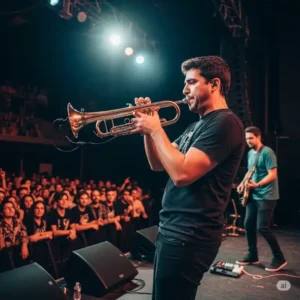
Advanced Technical Analysis
Acoustic Engineering Principles
The bass trumpet’s acoustic behavior differs significantly from standard Bb trumpets due to extended tube length and modified harmonic series relationships. The fundamental frequency of a bass trumpet in Bb is approximately 116.5 Hz, exactly one octave below a standard trumpet. This frequency relationship creates unique resonance patterns that affect both timbre and projection characteristics.
Modern bass trumpet design employs sophisticated acoustic modeling to optimize bore profiles and taper rates. Computer-aided design allows manufacturers to predict harmonic content and adjust construction parameters to enhance specific frequency ranges. The most successful contemporary instruments feature carefully calculated bore expansions that maintain consistent resistance across all registers. 🔊
Finite element analysis has revolutionized understanding of how material thickness, alloy composition, and construction techniques affect tonal production. Research conducted at major acoustics laboratories demonstrates that wall thickness variations of just 0.1mm can significantly alter an instrument’s harmonic spectrum and dynamic response characteristics.
Materials Science and Innovation
Contemporary bass trumpet manufacturing incorporates advanced metallurgical techniques unknown to instrument makers of previous generations. Modern brass alloys feature precise chemical compositions with trace elements that enhance corrosion resistance and tonal stability. Specialized heat treatment processes create molecular structures that optimize both durability and acoustic properties.
Recent innovations include the use of beryllium copper alloys in select premium models. Beryllium copper provides enhanced strength-to-weight ratios and superior spring characteristics in valve applications. However, beryllium requires specialized manufacturing techniques and safety protocols due to health considerations during production processes. ⚗️
Some manufacturers experiment with composite materials for specific components. Carbon fiber valve caps and slides offer weight reduction benefits while maintaining structural integrity. These materials particularly benefit touring musicians who prioritize instrument portability without sacrificing performance quality.
Valve Technology and Mechanical Engineering
Modern bass trumpet valve systems represent centuries of engineering evolution and refinement. Piston valves employ precision-machined cylinders with tolerances measured in thousandths of inches. Contemporary manufacturing utilizes computer-controlled machining centers that ensure consistent bore alignment and smooth operational characteristics.
Rotary valve technology originated in German and Austrian instrument making traditions. Modern rotary systems feature ball bearing linkages, precision-ground rotor surfaces, and carefully calibrated spring tensions. The mechanical advantage provided by rotary lever systems reduces finger fatigue during extended playing sessions, particularly important for bass trumpet applications where increased air resistance creates additional physical demands. 🔧
Advanced valve designs incorporate specialized coatings and surface treatments. Some premium models feature titanium nitride coatings on piston surfaces, providing enhanced corrosion resistance and reduced friction. These treatments extend valve life and maintain smooth operation in challenging environmental conditions.
Comprehensive Setup and Usage Guide
Initial Setup and Adjustment Procedures
Proper bass trumpet setup requires systematic attention to multiple adjustment parameters. Begin by verifying slide alignment and lubrication before attempting to play. All tuning slides should move smoothly without binding or excessive looseness. Apply appropriate slide grease to main tuning slides and valve slides, ensuring complete coverage without over-application.
Valve alignment represents a critical setup parameter often overlooked by newcomers to bass trumpet. Each valve must seat properly in its casing with consistent spring tension. Test valve action by depressing each valve individually and checking for smooth, positive return action. Any irregularities in valve behavior should be addressed before attempting serious practice sessions. 🔧
Mouthpiece selection significantly impacts both comfort and tonal production. Bass trumpet mouthpieces feature larger internal dimensions compared to standard trumpet mouthpieces. Cup diameters typically range from 25.5mm to 27mm, with rim widths varying from medium to wide configurations. Experiment with different mouthpiece designs to find optimal balance between comfort and tonal requirements.
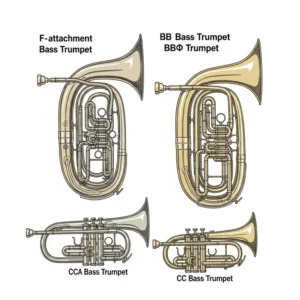
Embouchure Development and Adaptation
Transitioning from standard trumpet to bass trumpet requires gradual embouchure adaptation and breathing technique modification. The larger mouthpiece dimensions and increased air resistance demand enhanced muscular endurance and modified oral cavity positioning. Professional pedagogy recommends limiting initial practice sessions to 15-20 minute intervals to prevent embouchure fatigue.
Breathing technique adaptation involves developing increased lung capacity and improved air stream control. Bass trumpet performance requires approximately 30-40% more air volume compared to standard trumpet playing. Diaphragmatic breathing exercises and sustained tone practice help develop the physical conditioning necessary for extended bass trumpet performance. 🫁
Range development follows different patterns compared to standard trumpet practice. Focus initially on developing strong, centered tones in the middle register (written middle C to G above the staff). Gradually expand range in both directions while maintaining consistent tone quality and intonation accuracy. Avoid excessive high register practice until fundamental technique is secure.
Practice Methodologies and Skill Development
Effective bass trumpet practice requires structured approaches that address the instrument’s unique technical demands. Daily routine should include long tone exercises, scale patterns, and interval studies specifically designed for bass register development. Concentrate on developing consistent attack characteristics and smooth legato passages.
Articulation studies take on increased importance in bass trumpet development. The instrument’s acoustic characteristics can make crisp articulation challenging, particularly in fast passages. Practice single tonguing, double tonguing, and triple tonguing exercises using appropriate syllable patterns. Focus on maintaining clarity without sacrificing tone quality. 🎯
Intonation awareness requires heightened attention compared to standard trumpet playing. Bass trumpet harmonics can be less forgiving of embouchure inconsistencies and air stream variations. Use electronic tuners and play with drone tones to develop accurate pitch discrimination. Practice scales and arpeggios while monitoring intonation consistency across all registers.
Industry-Specific Applications and Professional Use Cases
Orchestral Performance Applications
Modern orchestral bass trumpet usage extends far beyond traditional Wagner repertoire. Contemporary composers increasingly write idiomatic bass trumpet parts that exploit the instrument’s unique capabilities. Professional orchestral musicians must be prepared for solo passages, complex rhythmic patterns, and exposed melodic lines requiring technical precision equivalent to standard trumpet performance.
Symphony orchestras typically maintain bass trumpets as specialized equipment rather than regular section instruments. Principal and associate principal trumpeters often cover bass trumpet parts when required. This arrangement demands versatility and quick adaptation skills, as musicians may transition between instruments within single movements or compositions. 🎼
Chamber orchestra and opera company applications present different challenges compared to full symphony settings. Smaller ensembles require bass trumpet players to project adequately while maintaining appropriate balance with other instruments. The bass trumpet’s role often involves providing harmonic foundation while remaining alert for solo passages requiring prominent projection.
Jazz and Commercial Music Contexts
The jazz community’s embrace of bass trumpet reflects the instrument’s capacity for both harmonic support and melodic innovation. Professional jazz musicians utilize bass trumpet to expand ensemble texture and provide unique solo voice capabilities. The instrument’s distinctive timbre cuts through complex arrangements while adding harmonic depth to traditional jazz instrumentation. 🎷
Recording studio applications present specific technical requirements for bass trumpet performance. Close microphone techniques can emphasize mechanical noise from valve operation, requiring enhanced technical precision. Studio musicians must develop consistent dynamic control and eliminate extraneous sounds that might be acceptable in live performance but problematic in recording environments.
Commercial music contexts, including Broadway productions and television/film scoring, often require bass trumpet players to read complex arrangements with minimal rehearsal time. Professional commercial musicians must maintain sight-reading skills while adapting quickly to diverse musical styles and performance requirements.
Educational and Academic Applications
Music education programs increasingly recognize bass trumpet’s value in developing comprehensive musicianship skills. Students gain appreciation for extended range capabilities and enhanced understanding of brass family relationships. However, educational programs must carefully manage physical demands to prevent overuse injuries in developing players.
University programs often incorporate bass trumpet study into graduate-level trumpet curricula. Advanced students benefit from experiencing different valve systems, alternative fingering patterns, and expanded repertoire possibilities. Academic study typically emphasizes historical context alongside technical development. 📚
Community band and amateur ensemble contexts provide opportunities for adult musicians to explore bass trumpet without professional pressure. These settings allow for gradual skill development while contributing to ensemble literature that specifically features bass trumpet capabilities.
Maintenance and Longevity Strategies
Daily Maintenance Protocols
Consistent daily maintenance significantly extends bass trumpet lifespan and maintains optimal performance characteristics. After each playing session, remove all moisture from the instrument using appropriate cleaning procedures. Depress each valve while blowing air through the instrument to clear accumulated condensation from valve chambers and tubing.
Valve maintenance requires daily attention due to the bass trumpet’s increased air requirements and potential for accelerated wear. Remove valves weekly for cleaning and inspection. Clean valve pistons with warm water and mild soap, ensuring complete removal of accumulated oils and debris. Apply fresh valve oil before reassembly, using manufacturer-recommended lubricants. 🧽
Slide maintenance prevents corrosion and ensures smooth operation. Weekly cleaning of tuning slides removes accumulated dirt and old grease. Apply appropriate slide grease sparingly, focusing on complete coverage rather than excessive quantity. Test slide movement after lubrication to ensure proper operation.
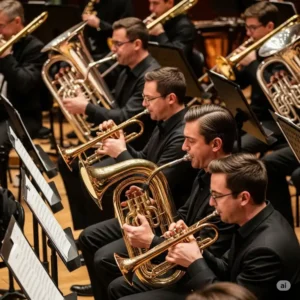
Professional Servicing and Repair
Professional bass trumpet servicing should occur annually or every 200-300 playing hours, whichever comes first. Qualified repair technicians can identify developing problems before they become major issues. Professional service typically includes complete disassembly, ultrasonic cleaning, valve alignment, and comprehensive adjustment of all mechanical systems.
Dent removal requires specialized techniques due to bass trumpet construction. The extended tubing length and complex curves make some areas particularly vulnerable to damage. Professional dent removal preserves acoustic characteristics while restoring structural integrity. Avoid attempting amateur dent repair, as improper techniques can cause permanent damage. 🔨
Valve replacement represents a significant maintenance consideration for heavily used instruments. Professional-quality valves can provide 5-10 years of service under normal usage conditions. However, intense professional use may require more frequent replacement. Quality replacement valves cost $200-$400 per set but dramatically improve instrument performance and reliability.
Long-term Care and Storage
Proper storage prevents many common bass trumpet problems. Climate-controlled environments minimize corrosion and mechanical issues. Avoid extreme temperature variations and high humidity conditions that accelerate deterioration. Professional cases provide adequate protection for most storage situations, but additional humidity control may be necessary in challenging climates.
Long-term storage requires special preparation procedures. Clean the instrument thoroughly before storage, removing all moisture and organic residues. Apply appropriate preservation lubricants to valve systems and slides. Store in cases with desiccant packets to control humidity levels. 🏠
Insurance considerations become important for professional-quality bass trumpets. Document instrument serial numbers, purchase receipts, and current market values. Professional appraisals may be necessary for insurance coverage of premium instruments. Consider specialized musical instrument insurance policies that provide coverage for professional use and travel.
Comparative Analysis and Alternative Solutions
Bass Trumpet vs. Flugelhorn Applications
While both instruments share similar pitch ranges, their applications and tonal characteristics differ significantly. Flugelhorns provide warmer, more rounded tone quality ideal for ballad playing and intimate musical settings. Bass trumpets offer greater projection and more precise articulation capabilities suitable for orchestral and large ensemble applications.
Professional musicians often maintain both instruments to address different musical requirements. Flugelhorn excels in small group jazz settings where subtlety and warmth are paramount. Bass trumpet provides the power and precision necessary for orchestral literature and large ensemble work. The choice depends on specific musical context and performance requirements. 🎺
Cost considerations favor flugelhorn acquisition for budget-conscious musicians. Quality flugelhorns are available at significantly lower prices compared to professional bass trumpets. However, bass trumpet provides greater versatility across different musical genres and performance settings.
Traditional Low Brass Alternatives
Bass trombone represents the most direct alternative to bass trumpet for low brass applications. Trombones provide greater dynamic range and extended low register capabilities. However, they lack the precise articulation and rapid passage work capabilities that bass trumpets offer. Professional sections often utilize both instruments depending on specific musical requirements.
Euphonium and baritone horn applications overlap with bass trumpet in some musical contexts. These instruments provide excellent blend capabilities and comfortable ergonomics. However, they lack the distinctive brightness and projection characteristics that make bass trumpet valuable in orchestral and jazz settings. 🎺
Tuba represents the ultimate low brass alternative but serves fundamentally different musical functions. While tubas provide unmatched low register power and harmonic foundation, they cannot replicate the agility and melodic capabilities that define bass trumpet applications.
Modern Technology Integration
Electronic amplification systems can enhance bass trumpet projection in challenging acoustic environments. Professional amplification requires specialized microphone techniques due to the instrument’s unique acoustic characteristics. Dynamic microphones often work better than condenser types for bass trumpet applications due to reduced sensitivity to mechanical noise.
Digital signal processing offers creative possibilities for bass trumpet performance. Reverb, delay, and harmonic enhancement effects can expand the instrument’s sonic palette. However, electronic processing should complement rather than replace fundamental acoustic techniques and traditional performance skills. 🔊
MIDI wind controllers provide practice opportunities without acoustic volume concerns. While they cannot replicate the physical demands of acoustic bass trumpet playing, electronic instruments offer silent practice capabilities and expanded sound libraries for creative exploration.
Case Studies and Success Stories
Professional Orchestra Implementation
The Philadelphia Orchestra’s adoption of bass trumpet for their complete Wagner Ring Cycle demonstrates successful professional implementation. Principal trumpet David Bilger worked closely with instrument manufacturers to select bass trumpets that blend effectively with the orchestra’s brass section while providing sufficient projection for solo passages.
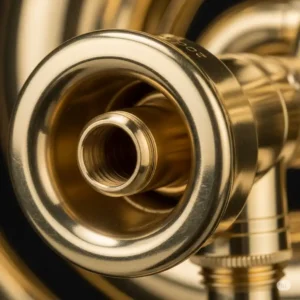
Implementation challenges included developing consistent embouchure techniques among multiple trumpet players who rotate bass trumpet responsibilities. The orchestra invested in multiple instruments to ensure availability and consistency across different productions. Training programs helped section members develop competency on both piston and rotary valve systems. 🎭
Measurable outcomes include improved intonation accuracy in bass register passages and enhanced blend characteristics with horn and trombone sections. Audience and critical reception has been consistently positive, with specific praise for clarity and precision in previously problematic bass trumpet literature.
Jazz Ensemble Innovation
The Jazz at Lincoln Center Orchestra’s integration of bass trumpet showcases innovative applications in contemporary jazz contexts. Musicians like Ryan Kisor have developed unique playing techniques that exploit the bass trumpet’s capabilities for both harmonic support and melodic improvisation.
Creative applications include using bass trumpet for reharmonization of standard jazz literature, providing bass lines that maintain trumpet-family articulation characteristics. The instrument’s capacity for both subtle background work and prominent solo features makes it valuable for diverse arrangement possibilities. 🎷
Performance metrics indicate increased audience engagement during bass trumpet features, with specific appreciation for the instrument’s unique timbral qualities. Recording projects featuring bass trumpet have received critical acclaim and demonstrate the instrument’s viability in contemporary music production.
Educational Program Development
The Eastman School of Music’s bass trumpet pedagogy program provides a model for academic implementation. Graduate students study both historical and contemporary approaches to bass trumpet performance, developing comprehensive understanding of the instrument’s musical applications.
Curriculum development includes technical studies, historical repertoire, and contemporary composition analysis. Students perform recitals featuring bass trumpet literature and complete research projects examining the instrument’s evolving role in different musical contexts. 📚
Assessment results demonstrate improved overall musicianship among participating students. Enhanced understanding of brass family relationships and expanded performance capabilities contribute to more versatile graduates prepared for diverse professional opportunities.
Future Trends and Market Evolution
Technological Innovation Directions
Manufacturers continue developing enhanced valve systems with improved precision and reduced maintenance requirements. Computer-aided design enables optimization of acoustic parameters while maintaining traditional construction quality. Future innovations may include hybrid materials that provide enhanced durability without compromising tonal characteristics.
3D printing technology offers possibilities for rapid prototyping and custom component manufacturing. While current technology cannot replicate the acoustic qualities of traditional brass construction, additive manufacturing may enable cost-effective production of specialized accessories and replacement parts. 🖨️
Smart instrument technology could provide real-time feedback for practice and performance optimization. Integrated sensors might monitor valve timing, air pressure, and embouchure positioning to assist technical development. However, such technology must enhance rather than replace traditional pedagogical approaches.
Market Growth and Accessibility
Increasing interest in bass trumpet reflects broader trends toward musical diversity and specialization. More manufacturers now offer entry-level models that provide professional-quality performance at accessible prices. This democratization enables more musicians to explore bass trumpet without prohibitive financial barriers.
Educational integration continues expanding as music programs recognize bass trumpet’s pedagogical value. University curricula increasingly include bass trumpet study as part of comprehensive trumpet education. Professional development workshops help established musicians add bass trumpet capabilities to their skill sets. 📈
International market expansion provides access to diverse manufacturing traditions and design philosophies. European, American, and Asian manufacturers each contribute unique approaches to bass trumpet construction, offering musicians expanded choice in finding instruments that match their specific needs and preferences.
Sustainability and Environmental Considerations
Sustainable manufacturing practices increasingly influence instrument production decisions. Recycled brass content, reduced packaging waste, and environmentally responsible finishing processes reflect industry commitment to ecological responsibility. Musicians increasingly consider environmental impact alongside traditional performance criteria.
Instrument longevity represents a form of sustainability, as well-maintained bass trumpets can provide decades of reliable service. Quality construction techniques and repairable designs extend instrument lifespans while reducing environmental impact of frequent replacement. 🌱
Local manufacturing initiatives reduce transportation-related environmental costs while supporting regional craftsmanship traditions. Some manufacturers emphasize locally sourced materials and traditional construction techniques that minimize industrial environmental impact.
✨ Ready to Transform Your Sound?
🎺 Whether you’re seeking your first bass trumpet or upgrading to a professional model, these carefully selected instruments offer the perfect combination of quality, value, and performance. Don’t let another rehearsal pass without experiencing the rich, powerful voice of a quality bass trumpet!
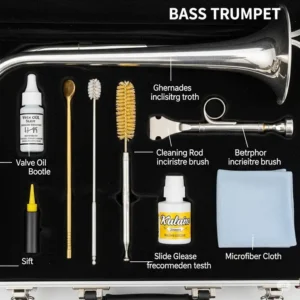
Conclusion
The bass trumpet represents a remarkable synthesis of technical innovation and musical artistry that continues to evolve in response to changing performance demands and musical contexts. From the budget-friendly Wessex BT1 at $755 to the premium Schagerl WUNDERHORN at $7,000, today’s market offers exceptional options for musicians at every level and budget point.
Throughout this comprehensive exploration, we’ve examined how proper instrument selection depends on understanding your specific musical requirements, technical capabilities, and long-term performance goals. Whether you’re drawn to the proven reliability of the Bach B188 Stradivarius for its versatility across classical and jazz applications, or intrigued by the innovative engineering of European manufacturers like Schagerl and Miraphone, the key lies in matching instrument characteristics to your unique musical vision.
The bass trumpet’s renaissance reflects broader trends toward musical specialization and expanded sonic palettes in contemporary performance. As composers continue writing idiomatic bass trumpet literature and performers explore the instrument’s creative possibilities, we can expect continued innovation in both instrument design and performance techniques.
Remember that bass trumpet mastery requires patience, consistent practice, and gradual physical adaptation. The investment in quality equipment pays dividends through enhanced musical expression and expanded professional opportunities. Whether you’re pursuing orchestral excellence, jazz innovation, or educational enrichment, the bass trumpet offers a pathway to distinctive musical communication that simply cannot be replicated by any other instrument.
Frequently Asked Questions
❓ What is the typical price range for a quality bass trumpet?
✅ Quality bass trumpets range from $750-$7000+ depending on construction and brand. Entry-level models from manufacturers like Wessex start around $750-$850, while mid-range options from established brands fall between $3000-$5500. Premium models from Schagerl, Thein, and custom makers can exceed $7000...
❓ Are bass trumpets harder to play than regular trumpets?
✅ Yes, bass trumpets present a steeper learning curve due to larger mouthpieces and increased air requirements. The extended tube length requires approximately 30-40% more air volume than standard trumpets. Most players need 3-6 months to develop comfort and facility if they're already proficient on regular trumpets...
❓ What's the difference between piston and rotary valve bass trumpets?
✅ Piston valves offer familiar action for trumpet players with rapid response ideal for jazz applications. Rotary valves provide smoother airflow and seamless legato playing preferred for orchestral work. European classical musicians typically prefer rotary systems while American jazz players favor piston configurations...
❓ Can bass trumpets be used in jazz ensembles effectively?
✅ Absolutely! Bass trumpets excel in jazz applications providing unique harmonic support and distinctive solo voice capabilities. Professional jazz musicians like Rashawn Ross demonstrate the instrument's versatility in both traditional and contemporary contexts. The bass trumpet adds textural depth while maintaining trumpet family articulation characteristics...
❓ What maintenance requirements do bass trumpets have?
✅ Bass trumpets require daily moisture removal, weekly valve cleaning, and annual professional servicing. The extended tubing and increased air volume create more condensation requiring vigilant maintenance. Professional service every 200-300 playing hours ensures optimal performance and prevents costly repairs...
Recommended for You:
- 7 Best Bass Saxophone for Sale Options to Transform Your Sound in 2025
- 7 Best Bass Trombone for Sale Options: Ultimate Professional Guide 2025
- 7 Best Backun Alpha Bass Clarinet Reviews for Professional Musicians in 2025
Disclaimer: This article contains affiliate links. If you purchase products through these links, we may earn a small commission at no additional cost to you.
✨ Found this helpful? Share it with your friends! 💬🤗

